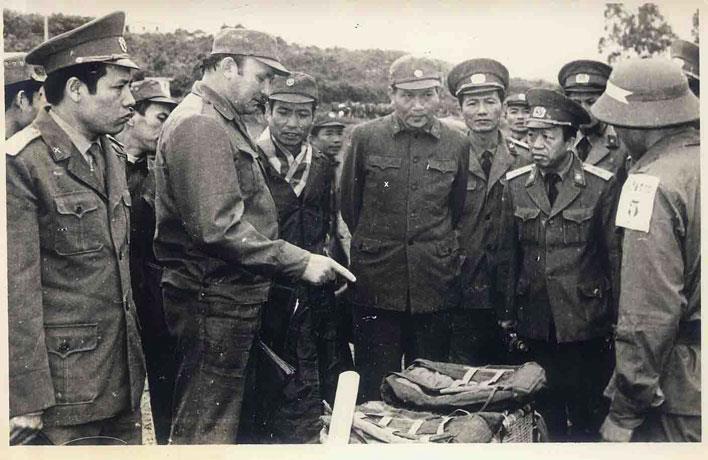Vietnam War is one of the most expensive war in the history of human beings. Republic of Vietnam was massively supported by the United States which later directly involved in the war, planned and controlled all strategies, especially “Special War”, “Local War”, and “Vietnamization”. The total cost of the US involvement in Vietnam War mounted more than 686 billion dollars (equivalent to the rate in 2008). Five main U.S. allies also sent troops to directly join Vietnam War including South Korea, Australia, New Zealand, Thailand, and The Philippines.
In the side of pro-Saigon, after the biggest troops of the United States, South Korea played its part as the second country having the largest number of troops in South Vietnam. In 1964, the first troops of South Korean arrived Vietnam, followed by the large formations in the following year. According to the statistics, there were 320 thousand soldiers of South Korean sent to Vietnam with the highest number of soldiers per troop reaching 50 thousand in 1968. By 1973, the South Korean troops were forced to withdraw. There were about 5099 of the South Korean soldiers killed, and over 10,000 ones wounded in this war. The United States paid soldiers of the South Korean 236 million dollars for their involvement in Vietnam War. Along with the participation of South Korean in the war, Australia and New Zealand which were allies of the U.S also sent troops to Vietnam. The Domino Theory was also controlled by governments of the two countries. From 1962 to 1965, advisors and combat troops were sent to Vietnam by Australia. While, the military facilities such as a partition of engineers and artillery battery were sent to Vietnam by New Zealand, along with special forces and regular infantry. There were about over 7,500 troops of Australia, more than 500 ones of New Zealand, and over 6,000 Australian personnel sent to South Vietnam. The numbers of Australian personnel killed and wounded were 521 and 3,000 respectively. Meanwhile, 37 killed and 187 wounded New Zealand personnel of 3,000 ones involving in the war. In Asia, allies of the United States consisted of Philippines, Thailand, and Republic of China (Taiwan). The number of the Philippines troops sent to Vietnam was about 10,450. Their main duty was serving in medical and civilian pacification projects. While, during the time of 1965 and 1971, the army of Thailand, Republic of China operated in South Vietnam.

Although it was not comparable in number with the U.S., the Democratic Republic of Vietnam also received great material assistances from allies in Vietnam War (about 7 billion U.S. dollars) from the Soviet Union, China, and the block of socialist countries. However, being different from the Republic of Vietnam, in order to maintain the autonomy, the Democratic Republic of Vietnam did not accept to let foreign combat troops sent directly to Vietnam and join the war. Military forces and experts of socialist countries were only allowed setting footholds from Thanh Hoa to the north, and supporting only in indirect activities such as air defense, construction, engineering and training under the control of the Democratic Republic of Vietnam when necessary. The guideline of leadership and combat were planned and conducted by the Democratic Republic of Vietnam without external control. Even though both the Soviet Union and China put high pressure, but the Democratic Republic of Vietnam did not change its tactics.

In 1950, weapons and military advisors were sent by the People’s Republic of China (PRC) to support Viet Minh in anti-French resistance. In summer 1962, 90,000 rifles and guns were sent to Hanoi under the agreement of Mao Zedong, president of the PRC. In 1965, North Vietnam received the anti-aircraft units and engineering contingents from China to repair roads damaged by the bombing of the American. In addition, the PRC sent 320,000 troops and annual arms shipments to North Vietnam. While, the Soviet Union aided the North Vietnam with medical supplies, arms, 2,000 tanks, and planes, 120 helicopters, 7,000 artillery guns, over 5,000 anti-aircraft guns and other military equipment. During the war, there were about 3,000 troops of the Soviet Union sent to Vietnam. During 1965 and 1974, about 6,500 officers and generals, over 4,500 soldiers and sergeants of the Soviet Union observing the fighting in Vietnam. Along with the supports of China and the Soviet Union, the Democratic Republic of Vietnam received the assistance of North Korea and Cuba during the war. It can be said that the foreign aid and the role of allies in Vietnam War had a big impact on the scale, intensity and morphology of the war.
